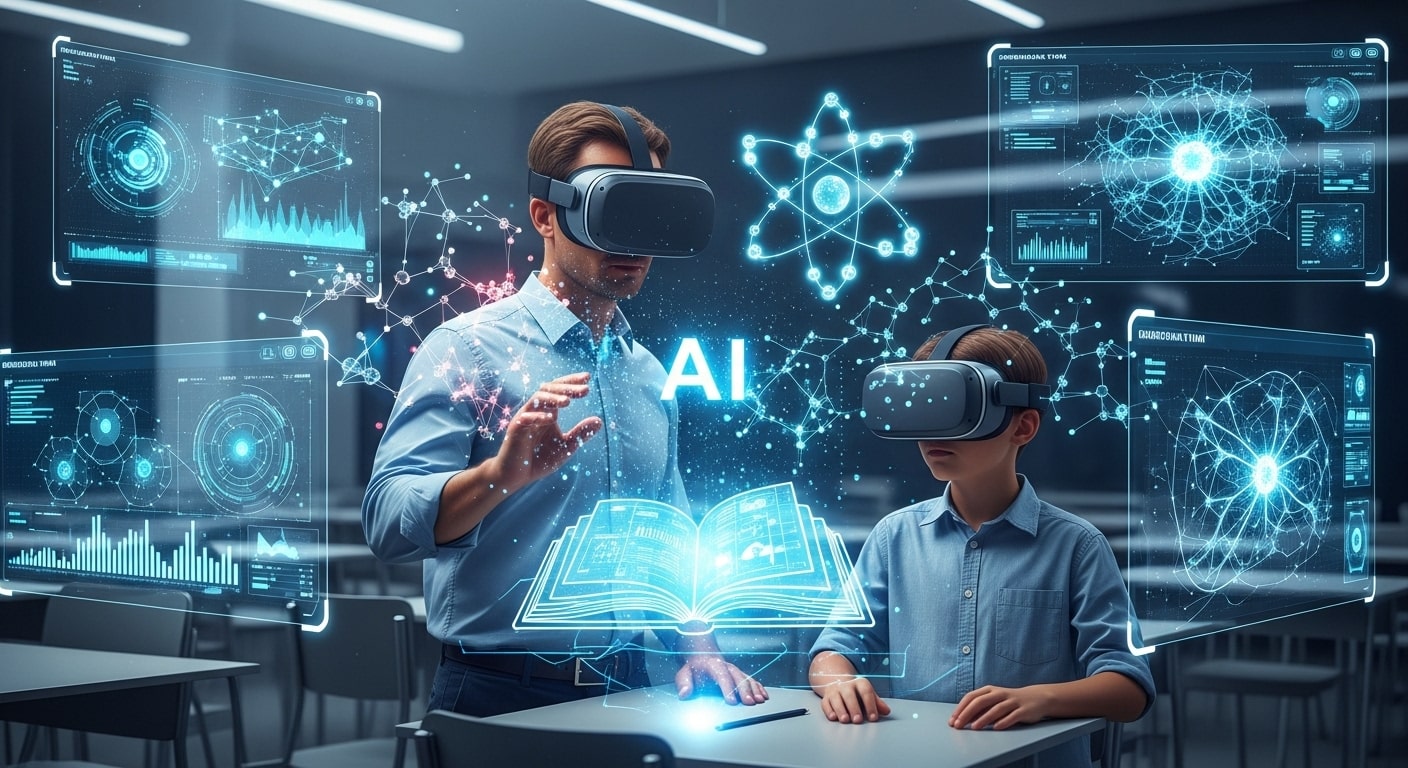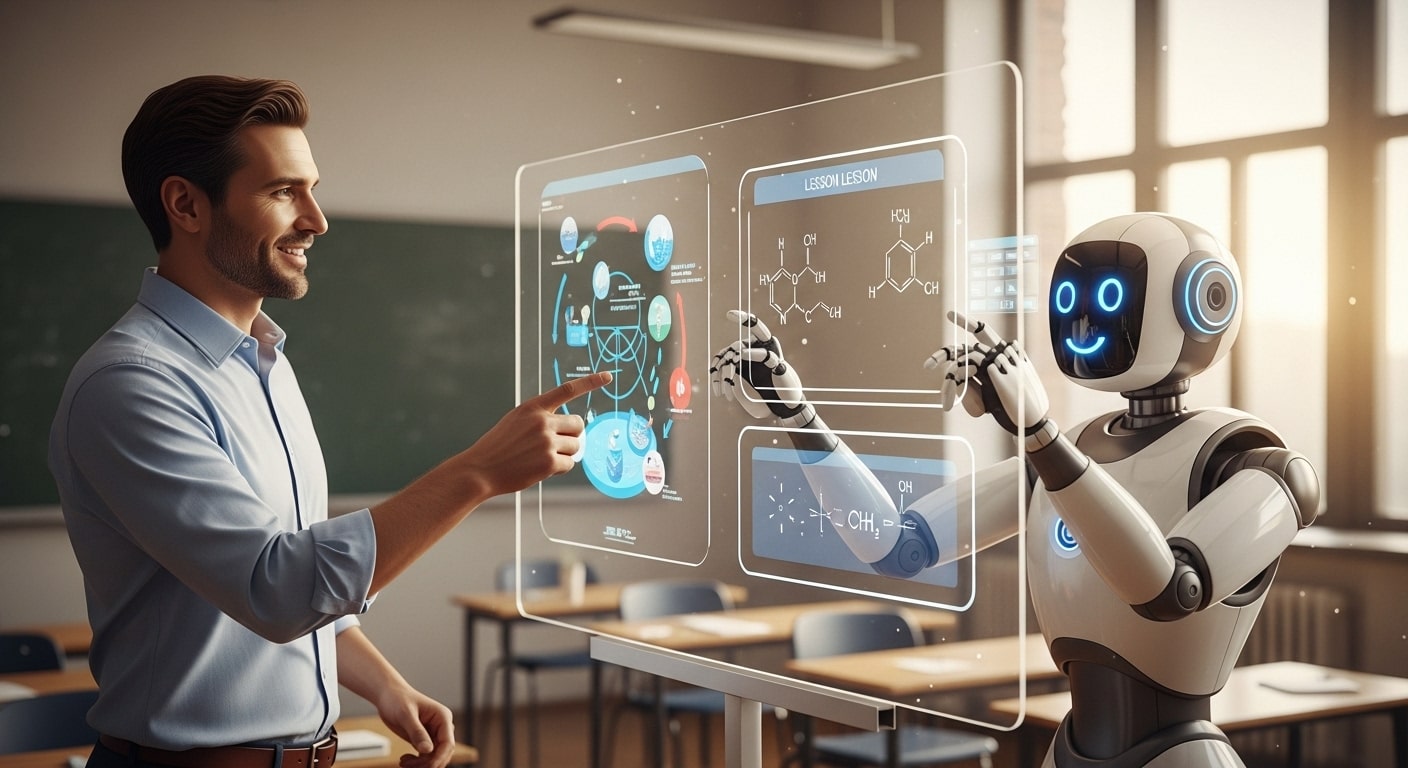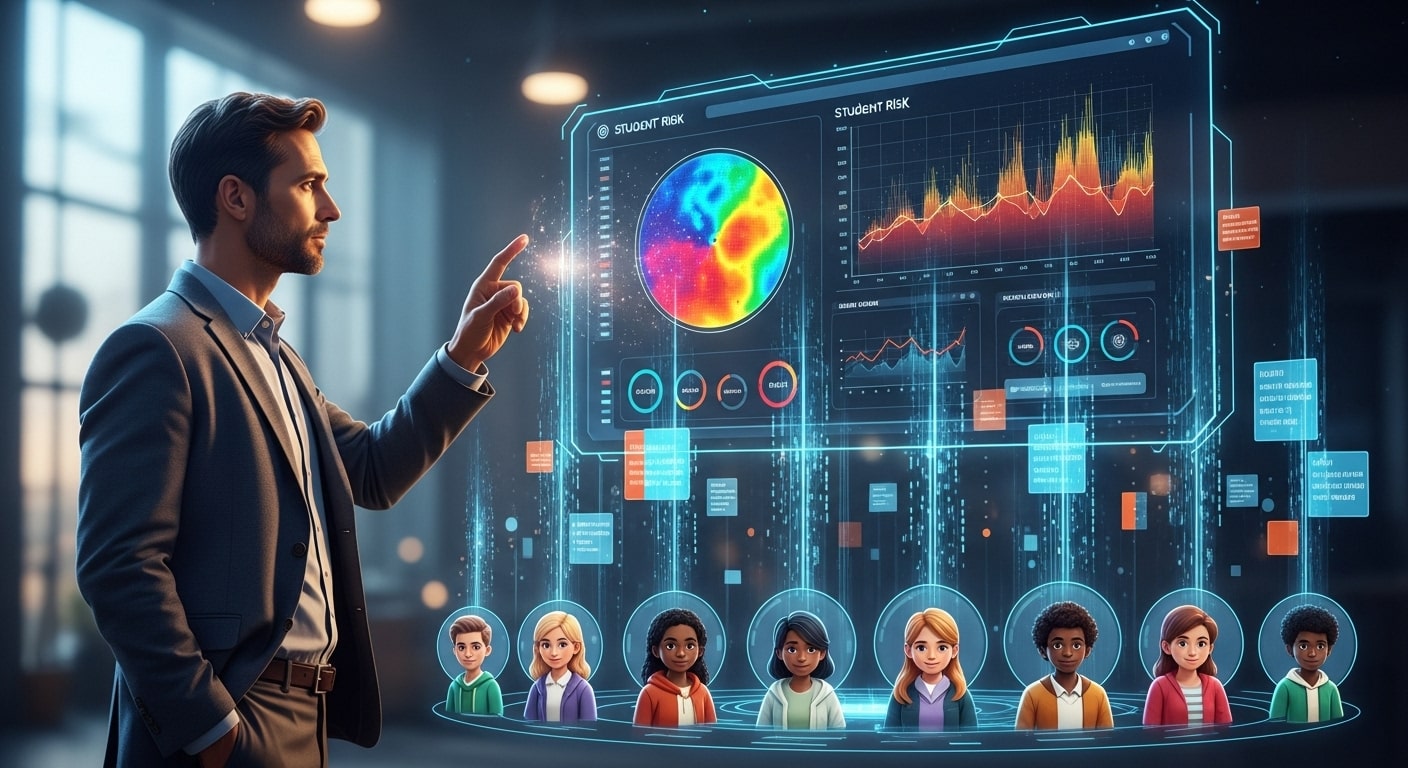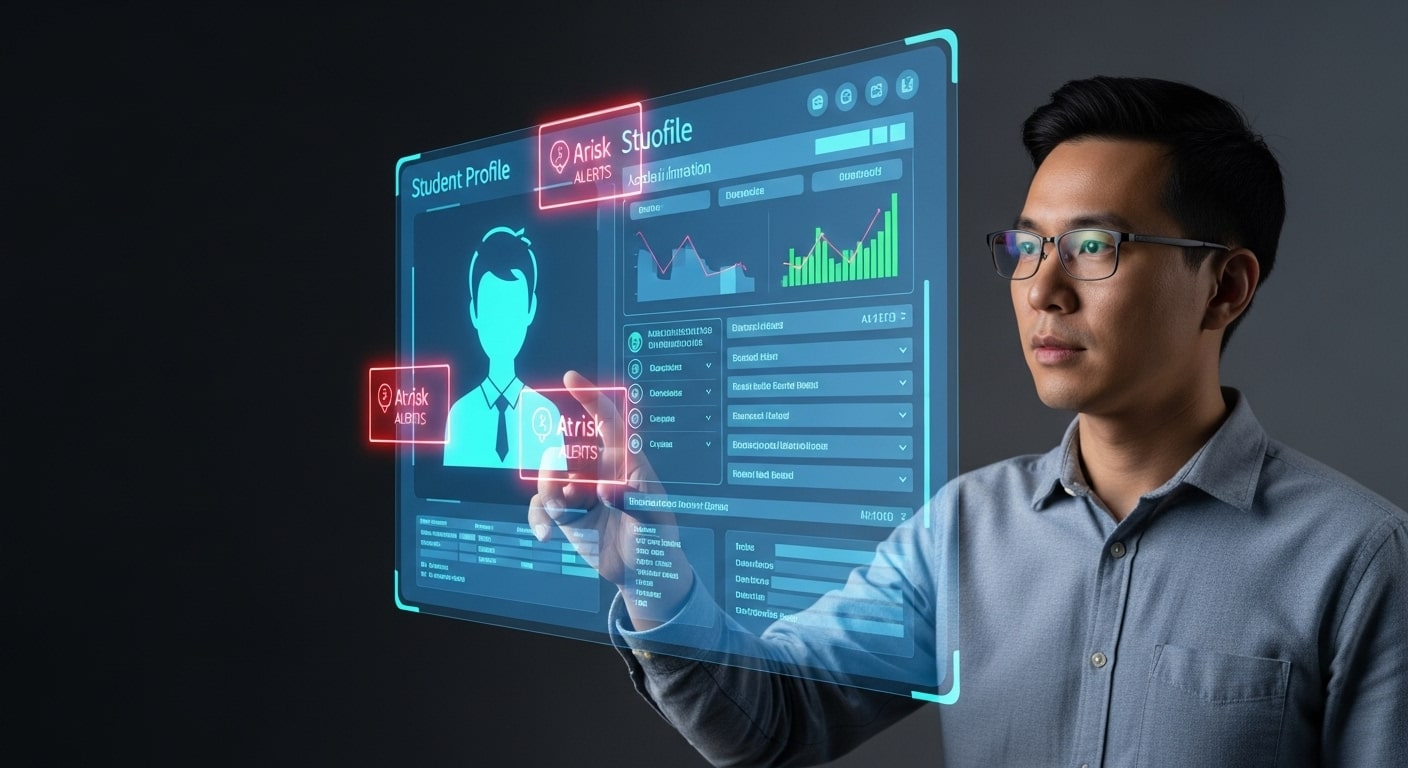Education stands at the threshold of profound transformation as emerging technologies converge to create learning experiences that were once the realm of science fiction. While artificial intelligence has already begun to reshape teaching and learning, its combination with virtual reality, augmented reality, brain-computer interfaces, and other emerging technologies promises even more dramatic changes in the coming decade. Understanding these potential futures helps educators prepare for and shape the evolution of learning environments.
Immersive Learning Environments
The integration of AI with immersive technologies is creating unprecedented learning possibilities:
AI-Powered Virtual Reality combines the immersive qualities of VR with the adaptive intelligence of AI to create responsive learning environments. Students can explore historical events where AI-driven characters respond naturally to questions, conduct virtual science experiments with realistic physics and intelligent guidance, or practice language skills with AI conversation partners in culturally authentic settings.
Augmented Reality Learning Layers use AI to overlay educational content onto the physical world based on individual learning needs and interests. A student might point their device at a plant to see an AI-generated visualization of photosynthesis occurring, with the explanation tailored to their current understanding level.
Digital Twins of Physical Spaces create virtual replicas of real-world environments enhanced with AI-driven interactive elements. Students unable to physically visit a museum, laboratory, or historical site can explore detailed digital versions with intelligent guides and adaptive learning activities.
Haptic Feedback Systems add physical sensation to virtual experiences, allowing students to “feel” historical artifacts, manipulate virtual molecules, or practice surgical techniques with realistic tactile feedback guided by AI coaching.
These immersive environments enable experiential learning that combines the engagement of real-world experiences with the safety, accessibility, and personalization of digital environments.
Cognitive Enhancement and Brain-Computer Interfaces
Emerging technologies are beginning to directly interface with cognitive processes:
Non-Invasive Brain-Computer Interfaces are becoming more sophisticated, allowing measurement of attention, cognitive load, and emotional states during learning. AI systems use this information to adjust content presentation, pacing, and difficulty in real-time based on neural signals.
Cognitive Training Systems use AI to identify specific cognitive skills—like working memory, attention control, or mental rotation—that might benefit from targeted enhancement and provide personalized training activities.
Memory Augmentation Tools help students encode information more effectively by identifying optimal timing for review based on individual forgetting curves and presenting content in formats aligned with personal cognitive preferences.
Focus Management Systems combine environmental controls, neurofeedback, and AI coaching to help students maintain attention during learning, gradually building stronger concentration abilities.
While some of these technologies remain in early development, they represent a frontier where education and neuroscience increasingly converge, raising both exciting possibilities and important ethical questions.
AI-Orchestrated Learning Ecosystems
Beyond individual technologies, AI is beginning to coordinate entire learning ecosystems:
Seamless Learning Continuity across devices, environments, and time periods allows education to extend beyond classroom walls. AI systems maintain coherent learning progressions whether a student is at school, home, or elsewhere.
Dynamic Resource Allocation uses AI to coordinate human and technological resources based on real-time learning needs. If several students across different classes are struggling with similar concepts, the system might organize a small group session with an appropriate teacher or peer tutor.
Learning Community Orchestration helps connect students with peers, mentors, experts, and community resources based on complementary needs, interests, and capabilities. These connections might be virtual or in-person, synchronous or asynchronous.
Lifelong Learning Management extends beyond K-12 or higher education to support ongoing skill development throughout careers, with AI helping identify emerging skill needs and optimal learning pathways.
These coordinated ecosystems represent a shift from thinking about educational technology as individual tools toward integrated environments that surround learners with appropriate support.
Ethical and Social Considerations
As these technologies develop, several important considerations will shape their implementation:
Access and Equity concerns will intensify as more powerful educational technologies emerge. Ensuring these tools don’t widen existing gaps between privileged and underserved communities will require deliberate policy and investment.
Cognitive Liberty questions arise around technologies that directly interface with brain function. Establishing appropriate boundaries, consent procedures, and opt-out rights will be essential.
Human Connection remains fundamentally important to education even as technology advances. Preserving and enhancing meaningful human relationships within technology-rich environments will be a critical design challenge.
Data Governance frameworks will need to evolve to address the increasingly sensitive and comprehensive data these systems collect, particularly neurocognitive information.
Purpose Alignment requires ongoing dialogue about what education is ultimately for—what human capabilities we most value developing and how technology should support those priorities.
Shaping the Future
Rather than passively accepting technological change, educators have an opportunity to actively shape these developments:
Participate in Design Processes by engaging with developers, researchers, and policymakers to ensure educational technologies reflect sound learning principles and classroom realities.
Conduct Thoughtful Pilots that carefully evaluate both benefits and unintended consequences of new technologies before widespread adoption.
Develop Ethical Frameworks specific to educational technology that can guide decision-making about appropriate implementation.
Advocate for Equity by insisting that advanced educational technologies be developed and distributed in ways that benefit all learners.
Maintain a Human-Centered Vision that views technology as serving human development and connection rather than replacing it.
The most promising future isn’t one where technology simply automates education as we know it, but rather one where thoughtfully designed technologies expand human potential and connection in ways we’re just beginning to imagine. By engaging actively with these emerging possibilities, educators can help ensure that technological advancement serves our deepest educational values.
This concludes our 20-part series on AI in education. We hope these articles have provided valuable insights and practical guidance for implementing AI in your educational setting. For more resources and ongoing updates, subscribe to our newsletter or join our educator community.




